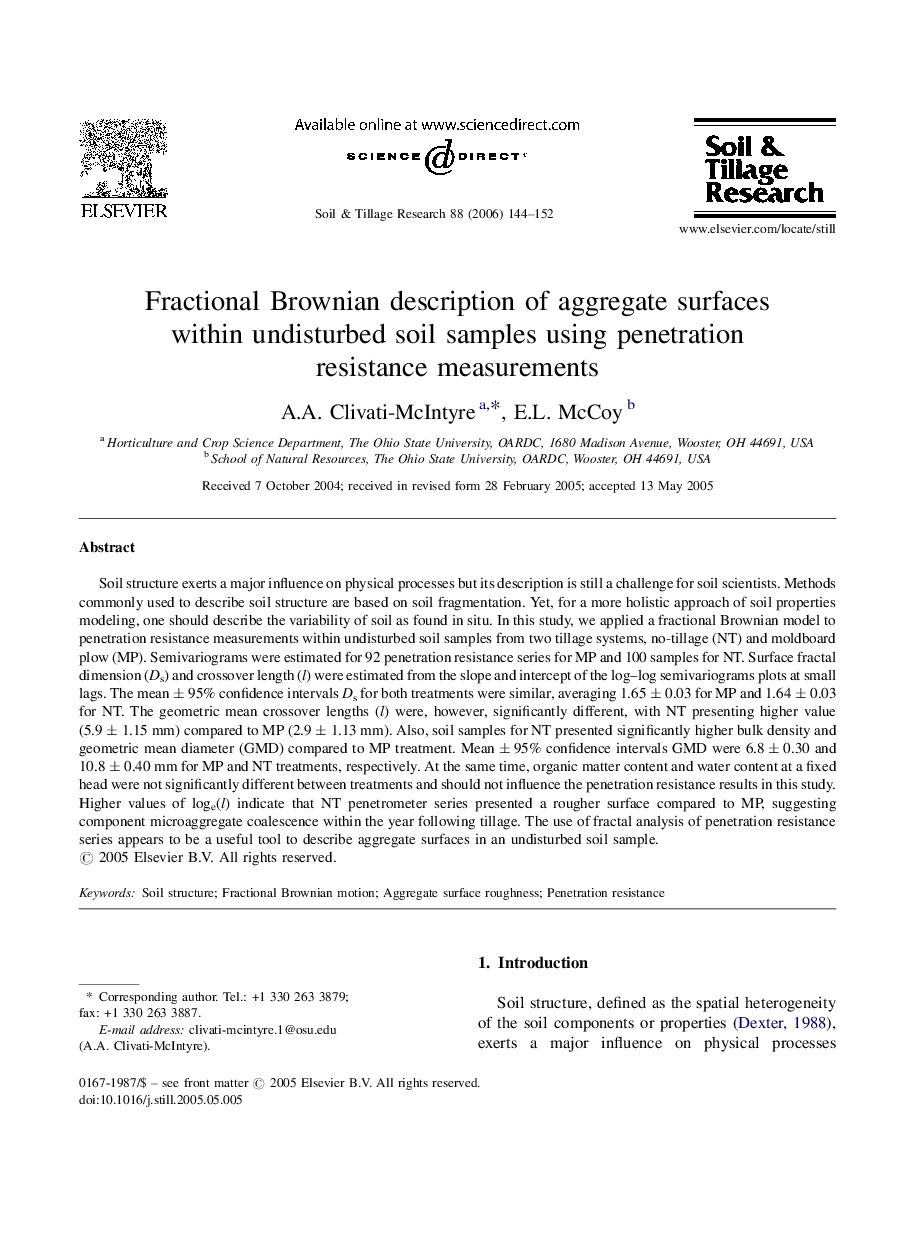| Article ID | Journal | Published Year | Pages | File Type |
|---|---|---|---|---|
| 306957 | Soil and Tillage Research | 2006 | 9 Pages |
Soil structure exerts a major influence on physical processes but its description is still a challenge for soil scientists. Methods commonly used to describe soil structure are based on soil fragmentation. Yet, for a more holistic approach of soil properties modeling, one should describe the variability of soil as found in situ. In this study, we applied a fractional Brownian model to penetration resistance measurements within undisturbed soil samples from two tillage systems, no-tillage (NT) and moldboard plow (MP). Semivariograms were estimated for 92 penetration resistance series for MP and 100 samples for NT. Surface fractal dimension (Ds) and crossover length (l) were estimated from the slope and intercept of the log–log semivariograms plots at small lags. The mean ± 95% confidence intervals Ds for both treatments were similar, averaging 1.65 ± 0.03 for MP and 1.64 ± 0.03 for NT. The geometric mean crossover lengths (l) were, however, significantly different, with NT presenting higher value (5.9 ± 1.15 mm) compared to MP (2.9 ± 1.13 mm). Also, soil samples for NT presented significantly higher bulk density and geometric mean diameter (GMD) compared to MP treatment. Mean ± 95% confidence intervals GMD were 6.8 ± 0.30 and 10.8 ± 0.40 mm for MP and NT treatments, respectively. At the same time, organic matter content and water content at a fixed head were not significantly different between treatments and should not influence the penetration resistance results in this study. Higher values of loge(l) indicate that NT penetrometer series presented a rougher surface compared to MP, suggesting component microaggregate coalescence within the year following tillage. The use of fractal analysis of penetration resistance series appears to be a useful tool to describe aggregate surfaces in an undisturbed soil sample.
